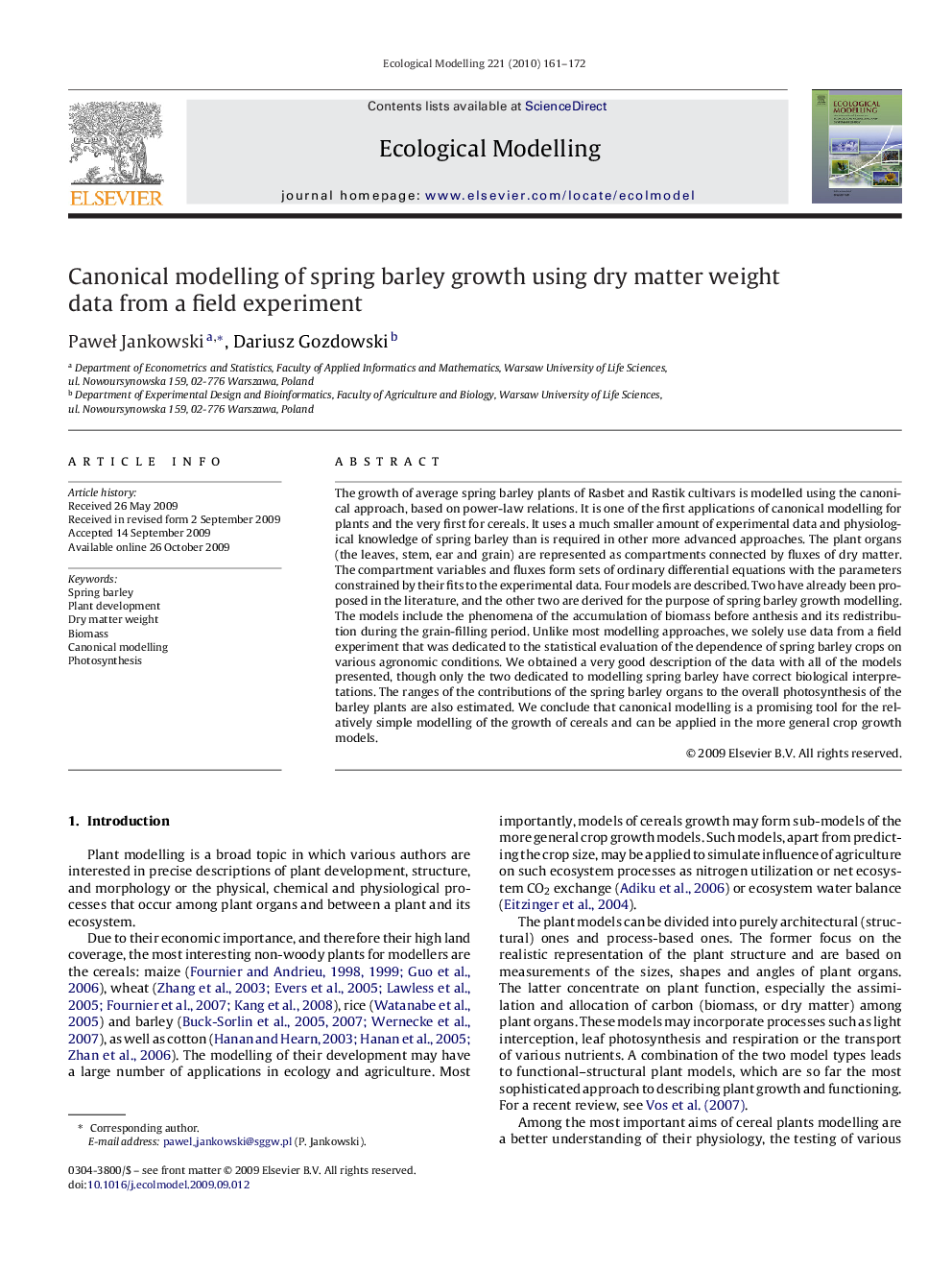| Article ID | Journal | Published Year | Pages | File Type |
|---|---|---|---|---|
| 4377480 | Ecological Modelling | 2010 | 12 Pages |
The growth of average spring barley plants of Rasbet and Rastik cultivars is modelled using the canonical approach, based on power-law relations. It is one of the first applications of canonical modelling for plants and the very first for cereals. It uses a much smaller amount of experimental data and physiological knowledge of spring barley than is required in other more advanced approaches. The plant organs (the leaves, stem, ear and grain) are represented as compartments connected by fluxes of dry matter. The compartment variables and fluxes form sets of ordinary differential equations with the parameters constrained by their fits to the experimental data. Four models are described. Two have already been proposed in the literature, and the other two are derived for the purpose of spring barley growth modelling. The models include the phenomena of the accumulation of biomass before anthesis and its redistribution during the grain-filling period. Unlike most modelling approaches, we solely use data from a field experiment that was dedicated to the statistical evaluation of the dependence of spring barley crops on various agronomic conditions. We obtained a very good description of the data with all of the models presented, though only the two dedicated to modelling spring barley have correct biological interpretations. The ranges of the contributions of the spring barley organs to the overall photosynthesis of the barley plants are also estimated. We conclude that canonical modelling is a promising tool for the relatively simple modelling of the growth of cereals and can be applied in the more general crop growth models.
